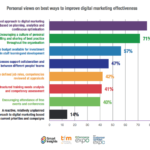As the e-commerce landscape continues to evolve, dropshipping has emerged as a popular and lucrative way for entrepreneurs to start and grow an online business. With minimal upfront costs and no inventory management hassles, dropshipping allows you to sell products to customers without holding any inventory. Instead, you partner with a supplier who ships products directly to your customers.
However, despite its popularity, dropshipping can be overwhelming for newbies. If you’re just starting out, it’s essential to understand the basics of dropshipping to avoid common pitfalls and maximize your chances of success. In this article, we’ll take you through a step-by-step guide to get you started with dropshipping.
Step 1: Research and Choose a Niche
The first step in dropshipping is to research and choose a niche. A niche is a specific area of interest or market that you’ll focus on. It’s essential to choose a niche that you’re passionate about and has a large audience.
When choosing a niche, consider the following factors:
* Competition: Look for a niche with moderate competition. If it’s too competitive, it may be challenging to stand out.
* Demand: Choose a niche with a high demand for products. You can use tools like Google Trends and Amazon Best Sellers to identify popular products.
* Profitability: Select a niche with high-profit margins. You can use tools like Oberlo and AliExpress to estimate profit margins.
Some popular niches for dropshipping include:
* Fashion and apparel
* Electronics and gadgets
* Home and garden
* Beauty and personal care
* Food and beverage
Step 2: Find a Supplier
Once you’ve chosen a niche, it’s time to find a supplier. A supplier is a company that manufactures or sources products that you’ll sell to your customers. You can find suppliers through various platforms, including:
* Alibaba: Alibaba is a popular platform for finding suppliers. You can filter suppliers by product, price, and reviews.
* Oberlo: Oberlo is a dropshipping platform that connects you with suppliers. You can filter suppliers by product, price, and reviews.
* AliExpress: AliExpress is a popular platform for finding suppliers. You can filter suppliers by product, price, and reviews.
When selecting a supplier, consider the following factors:
* Quality: Look for suppliers that offer high-quality products.
* Shipping: Choose suppliers that offer reliable shipping and tracking.
* Communication: Select suppliers that respond promptly to inquiries and communicate effectively.
Step 3: Set Up an Online Store
Once you’ve found a supplier, it’s time to set up an online store. You can use platforms like Shopify, WooCommerce, and BigCommerce to create an online store. When setting up your store, consider the following:
* Theme: Choose a theme that resonates with your niche.
* Product catalog: Create a product catalog that showcases your products.
* Payment gateway: Set up a payment gateway to process payments.
* Shipping options: Offer multiple shipping options to your customers.
Step 4: Market Your Store
Marketing is a crucial step in dropshipping. You need to promote your store to attract customers and increase sales. Here are some marketing strategies to consider:
* Social media marketing: Use social media platforms like Facebook, Instagram, and Twitter to promote your store.
* Email marketing: Build an email list and send targeted promotions to your customers.
* Influencer marketing: Partner with influencers in your niche to promote your store.
* Content marketing: Create high-quality content that attracts customers and establishes your authority in your niche.
Step 5: Fulfill Orders
When you receive an order, it’s essential to fulfill it promptly. You can use a variety of tools to fulfill orders, including:
* Oberlo: Oberlo allows you to fulfill orders directly from your Shopify store.
* AliExpress: AliExpress allows you to fulfill orders directly from their platform.
* Shipping integrations: Many e-commerce platforms offer shipping integrations that allow you to fulfill orders seamlessly.
Step 6: Monitor and Optimize
Finally, it’s essential to monitor and optimize your store regularly. This includes:
* Tracking analytics: Use analytics tools to track your store’s performance.
* Monitoring profits: Monitor your profits to identify areas for improvement.
* A/B testing: Test different versions of your store to optimize conversions.
* Customer service: Provide excellent customer service to build trust and loyalty.
Conclusion
Dropshipping is a lucrative way to start and grow an online business. By following these steps, you can successfully navigate the dropshipping process and maximize your chances of success. Remember to research and choose a niche, find a supplier, set up an online store, market your store, fulfill orders, and monitor and optimize your store regularly.
Frequently Asked Questions
Q: What is dropshipping?
A: Dropshipping is a business model where you sell products to customers without holding any inventory. Instead, you partner with a supplier who ships products directly to your customers.
Q: What are the benefits of dropshipping?
A: The benefits of dropshipping include minimal upfront costs, no inventory management hassles, and increased flexibility.
Q: What are the disadvantages of dropshipping?
A: The disadvantages of dropshipping include lower profit margins, lack of control over shipping, and potential quality control issues.
Q: How do I find a supplier?
A: You can find suppliers through platforms like Alibaba, Oberlo, and AliExpress. You can also search for suppliers through Google and social media.
Q: What are the key factors to consider when selecting a supplier?
A: The key factors to consider when selecting a supplier include quality, shipping, communication, and customer service.
Q: How do I set up an online store?
A: You can set up an online store using platforms like Shopify, WooCommerce, and BigCommerce. You’ll need to choose a theme, create a product catalog, set up a payment gateway, and offer multiple shipping options.
Q: What are some marketing strategies for dropshipping?
A: Some marketing strategies for dropshipping include social media marketing, email marketing, influencer marketing, and content marketing.
Q: How do I fulfill orders?
A: You can fulfill orders using a variety of tools, including Oberlo, AliExpress, and shipping integrations. You can also use your supplier’s fulfillment services.
Q: How do I monitor and optimize my store?
A: You can monitor and optimize your store by tracking analytics, monitoring profits, testing different versions of your store, and providing excellent customer service.









